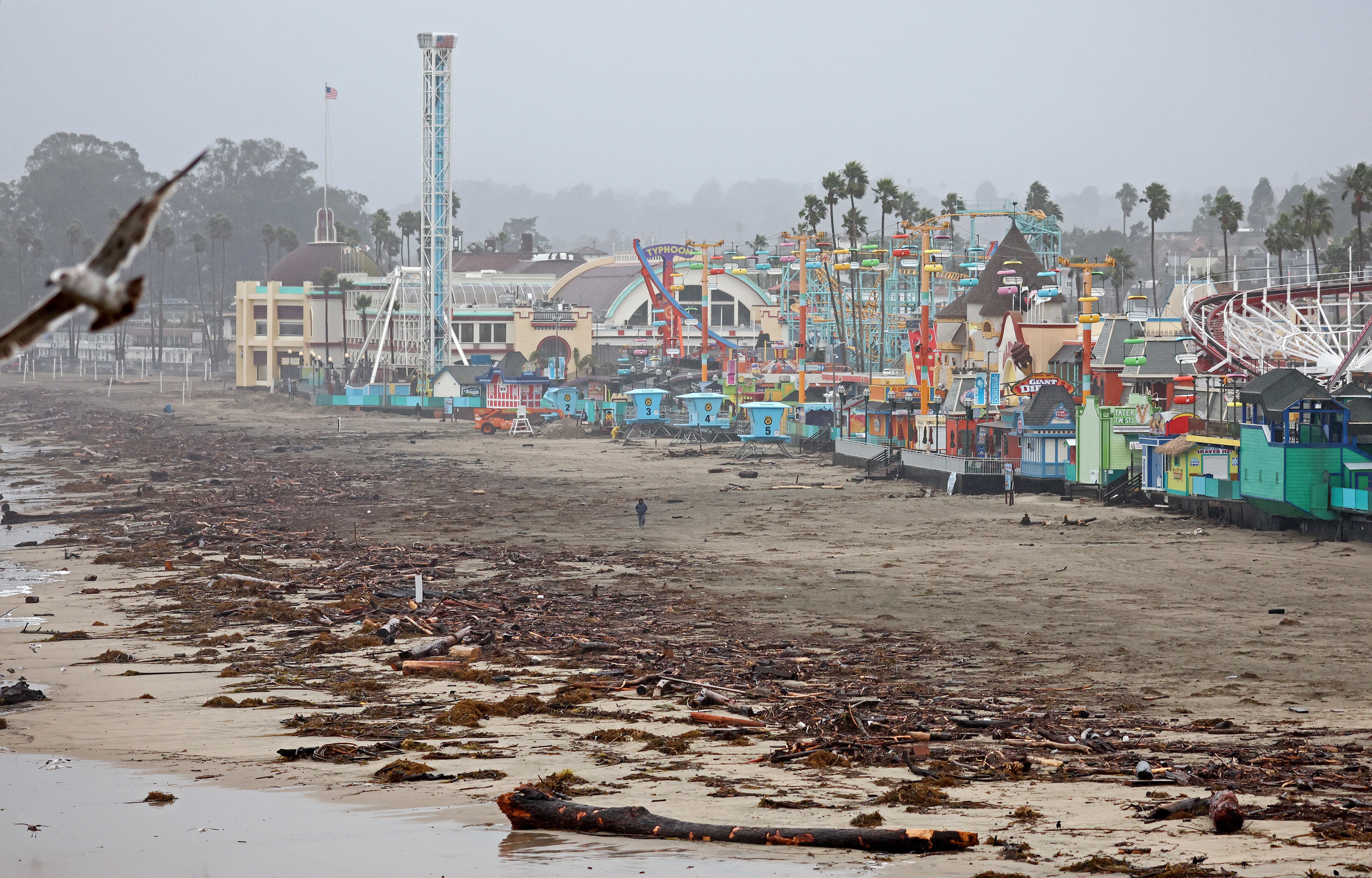California suffers 955 mudslides and flash floods in two weeks as relentless storms continue
At least 17 people have died in the extreme weather and a five-year-old boy remains missing
Parts of California have received over half their annual rainfall in the past two weeks as the state continues to be bombarded by heavy downpours, howling winds, and snow.
A relentless parade of atmospheric rivers has drenched chunks of the state from the ritzy coastal enclaves on the fringes of Los Angeles to northern wine country and mountain passes.
A staggering 955 flood, flash flood, or mudslides have been reported to local offices of the National Weather Service, the agency reported on Wednesday.
At least 17 people have died in incidents linked to the extreme weather. A female driver who called 911 saying she had been caught in floodwaters was found dead a day later inside the submerged vehicle, AP reported.
The search continues for a missing five-year-old boy who was swept from his mother’s arms after their vehicle became engulfed in floodwaters near the city of Paso Robles. More lives have been lost in the storms than in the past two years of devastating wildfires in the state.
Since 26 December, California has averaged 8.6 inches of rain and the San Francisco-Oakland metropolitan area has seen 13.3 inches on average, NWS said.
Extremely heavy snow fell in the Sierra Nevada mountains over the same 16-day period with more than 10ft at the highest elevations. Mammoth Mountain ski area was digging out and undertaking avalanche mitigation work on Wednesday after it had closed because of too much snowfall.
In southern California, the clean-up was underway after whole neighbourhoods were submerged, massive potholes opened up, and torrents of mud and rockslides caused widespread damage. The storms are expected to be the latest in a long line of billion-dollar weather and climate disasters for the US.
Further north, people braced for yet more severe conditions with wind advisories and flood watches in effect for millions of people in the San Francisco Bay Area on Wednesday.
More than 54,000 are currently without power in Mendocino and Humboldt counties, north of San Francisco, along with Santa Clara and Santa Cruz counties which includes Silicon Valley. In Gualala, a scenic coastal town north of San Francisco, residents have been without power for nearly a week.
Dozens of flights were delayed and cancelled at Los Angeles and San Francisco international airports as a major IT failure in a federal aviation administration system suspended all domestic US flights on Wednesday, adding to air travel woes.
During a visit to badly-impacted Santa Cruz county on Tuesday, Governor Gavin Newsom hinted at a link between California’s extreme weather and the climate crisis.
“The dries are getting a lot drier the last three years, and the wets are getting a lot wetter. This weather whiplash — is that the new reality?” he said, according to NBC News.
California has been in a state of “megadrought” for the past two decades, intensified by the impacts of global heating, according to UCLA research last year. The study also found that it could take several years of high precipitation to overcome the mega-drought. “It’s extremely unlikely that this drought can be ended in one wet year,” UCLA geographer Park Williams said at the time.

Atmospheric rivers can also be intensified by the climate crisis, scientists have warned. As the atmosphere heats up, it becomes capable of holding more water and leads to more intense deluges.
There will be brief respite as conditions ease over California on Thursday, and rains sweep north into Oregon and Washington.
But more severe weather is forecast this weekend. Moisture from the Pacific will produce heavy rain over parts of northern California, and rain and higher elevation snow over other parts of California and the Pacific Northwest through Friday evening, NWS reported.
“The associated heavy rain will create mainly localized areas of flash flooding, with urban areas, roads, small streams, and burn scars the most vulnerable,” the agency said.




Join our commenting forum
Join thought-provoking conversations, follow other Independent readers and see their replies
Comments